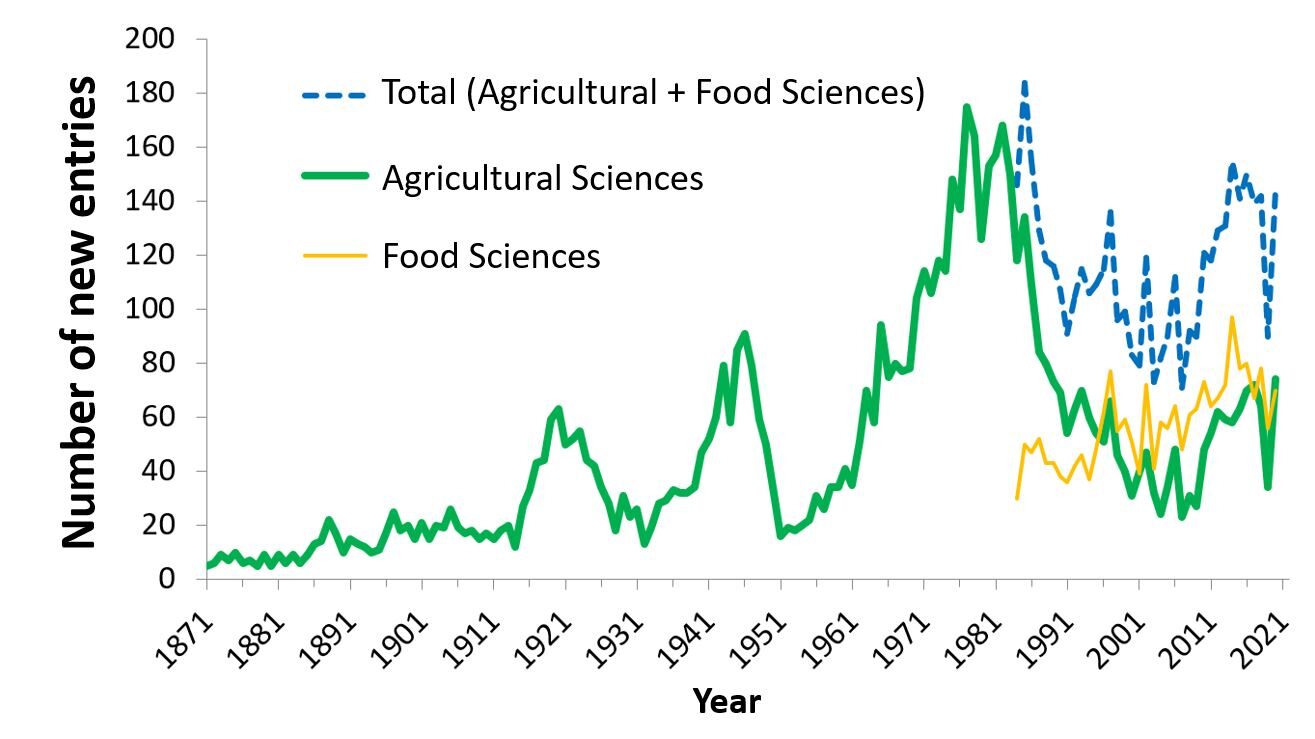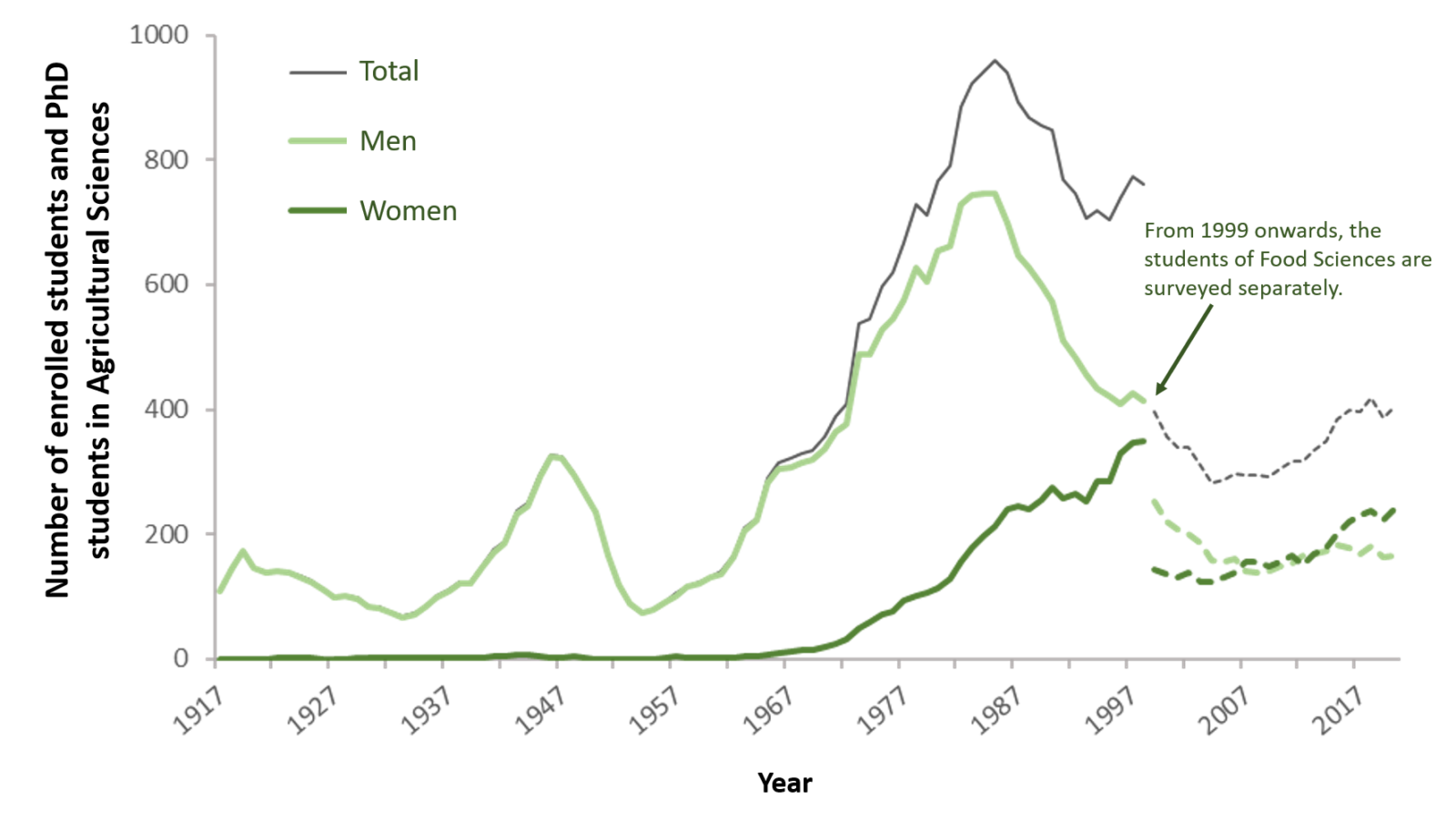New crisis, new growth?
Development of student numbers in one and a half centuries
Crises influence interest in agriculture. This was shown relatively clearly by the development of student numbers during the First and Second World Wars. Over the last 150 years, the proportion of international students has decreased, while more and more women have enrolled.
In 1871, five students took up the study of agricultural sciences, including two foreigners but no women. During the first 15 years, the numbers of new entrants remained at a similar level of five to eight students per academic year. It was not until the 1890s that the number of students per year rose to as many as 15 and increased steadily.
International start and late female power
The first woman enrolled in the study programme of agriculture as early as 1873, just two years after the course was founded. By 1933, however, only four more women had matriculated. It was not until the 1970s that the rate of enrolled women increased slowly but steadily. Since the end of the 1990s, it has been almost 50%.
Another trend is visible among students from abroad. In the first few years after the establishment of the degree programme, an average of six foreign students decided to study agriculture in Zurich each year. This means that every academic year saw more foreign students than Swiss. Until the early 1970s, the number of students from abroad remained below 20, while the number of Swiss students steadily increased. In 2020, foreign students and doctoral candidates accounted for 70 people, or around 17%.
In times of crisis, agriculture is in vogue
A sharp increase in student numbers was recorded during the two world wars, followed in each case by a drop in new enrolments to around 20 students at the end of the troubled times. Max Düggeli (Professor of Agricultural Bacteriology, 1925) explains this phenomenon with the difficulties of obtaining food during the war years. He wrote the following on the subject: “Through these difficulties [...] the great importance of an efficient agriculture for the entire welfare of the people was powerfully demonstrated to wide circles of the population, so that many a young man who would otherwise hardly have decided to study felt moved to join our department.”

Food sciences constantly growing, agricultural sciences strongly fluctuating
Around 1980, an all-time high was reached with new enrolments of 160 to 180 students per year. The first-year students were distributed between the two fields of study of agricultural and food sciences, which were established in 1970.
While the number of food science students has risen almost continuously since then, from around 30 at the beginning to around 70 today, the enrolment figures for agricultural sciences again experienced a significant drop from a peak of 150 students to only around 30 students from the end of the 1980s to the beginning of the twenty-first century.
Since the 2010s, the number of new enrolments in the BSc programme has been at a level of 70 students. Whether the climate crisis will attract even more students to the LFW in the future remains to be seen.

